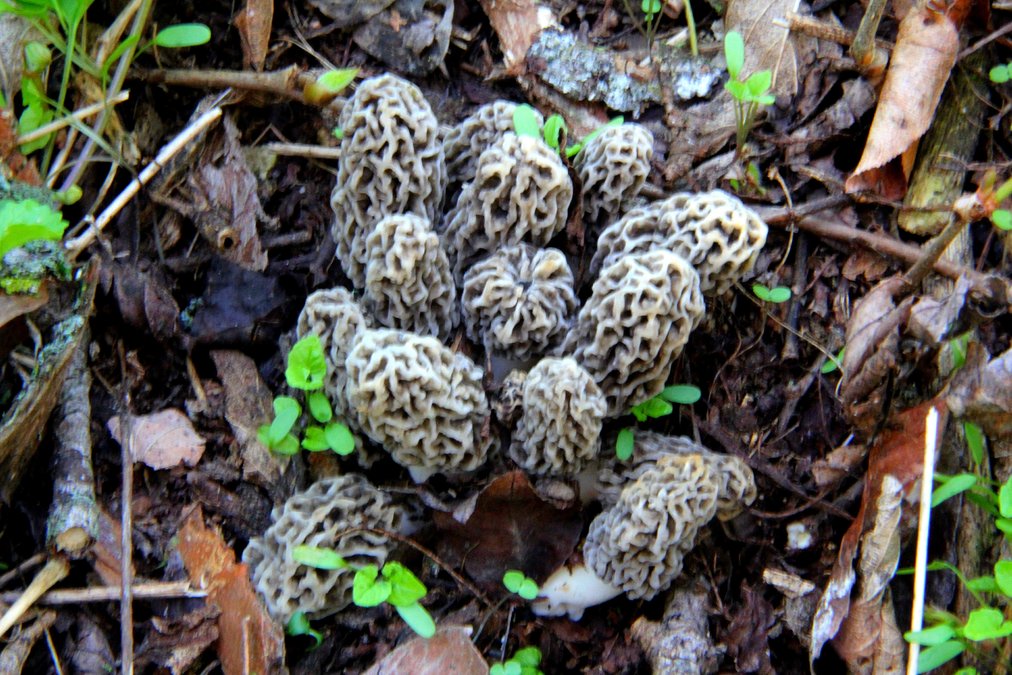General fishing opener, regular trout season, ongoing turkey hunting periods, morels mushrooming, spring ephemerals blooming, birds fledging, wildlife births, and much more are giving Wisconsin gatherers options galore.
Whatever it is an outdoors enthusiast likes to do, even mix and match, too, the season has brought us excitement using hoes, triggers, reels, binoculars, cameras or as simple as an open, snooping mind.
Be careful not to get in one another’s way and also be tolerant of others whose pursuits depend on not being disturbed. Those gathering morels need to be as aware of seeing turkey decoys and red, white and blue swatches of a gobbler’s head. Both a novice mycologist and turkey caller could be using the same plot of land. Morel pickers often wear camouflage, too, as they search for morels hidden under oak leaves. When looking skyward for dead elm trees and down a valley for apple orchards, boot-tripping bramble stem loops anchored on both ends may trip an anxious picker.
Safety first but then don’t step on the budding orchids, nesting ground birds and enlarging morel fruiting bodies.
The ragtag green curtain of trees, shrubs and understory herbs is not yet complete so turkey hunters should be cautious of being seen by game.
Jeff Fredrick, a Mindoro, Wisconsin turkey fanatic who is all about turkey hunting, art, products, and wildlife respect said that the greening in western Wisconsin and Minnesota is not concealing enough to cover hunters’ bodies when they move place to place.
“Midday may actually be a better time to pull a gobbler away from other birds or bring in a lone gobbler,” Fredrick said. “Gobbling, or lack of it, may not be an indication of where to start the day’s hunt, either.”
Fredrick prefers using a male turkey decoy staked in a submissive pose. One of his products is made in part from male turkey’s darker feathers. “The best feathers, as far as attracting birds, are from adult males.”
Fredrick and his children have already hunted Wisconsin and Minnesota using his techniques. He’s not tight with his experience, humor and ideas.
Even though many waters have been open to fishing during winter, the general inland fishing season opens Saturday, May 4. Trout anglers have been fishing for months but beginning May 4 they may keep some fish from most trout streams.
Waters in trout streams and other places where walleyes are fished have been low for several years, according to Bret Schultz of Black Earth, Wisconsin. “Of late there has been some relief (rains) but the lasting effect could lower trout populations and make fishing difficult,” Schultz said. “Insect hatches seem to be right on schedule in local trout streams.”
Check fishing and trout fishing regulations for specifics, particularly relating to a statewide daily bag limit of three walleyes/saugers per day on all inland waters. Additional bag and length limit changes for fish species are in place in 25 counties, too.
After two years of terrible May morel mushroom gathering, just dreadful many said, novice morel pickers are hoping for better opportunities under dead white elms, abandoned orchards, select aspen stands, and recent logged sites.
Some morels have already been picked mostly from sunny locations where few were found last year.
Morels are fungi, not plants. They do not produce seeds, fruit, and pollen and don’t have roots. They commonly grow attached to tree and other plant roots. The root/fungus connection sends and receives nutrients between fungus and tree. When the tree dies, at least in the case of an elm, the lack of nutrients available from the tree triggers the fungus to reproduce by producing spores in a mushroom which is what we pick and may eat.
Some individuals are allergic to morels and become ill by eating this fungus while the other 75 percent of the population can eat without feeling ill. Eating smaller quantities or growing older sometimes purges this illness.
Seasoned pickers use a variety of actions to hone in on that single, first morel. Walking up slopes instead of down helps keep focused on individual objects rather than trying to survey a square yard at one time.
Nesting, new wildlife in the population, flora bloom dates appearing daily, milder temperatures, planting seeds and tomato plants, more hours of sunlight, and happier attitudes all enhance outdoors enjoyment.
Prepare for the coming of periodic cicada insects later this month.
Contact Jerry Davis, a freelance writer, at sivadjam@mhtc.net or
608.924.1112.





